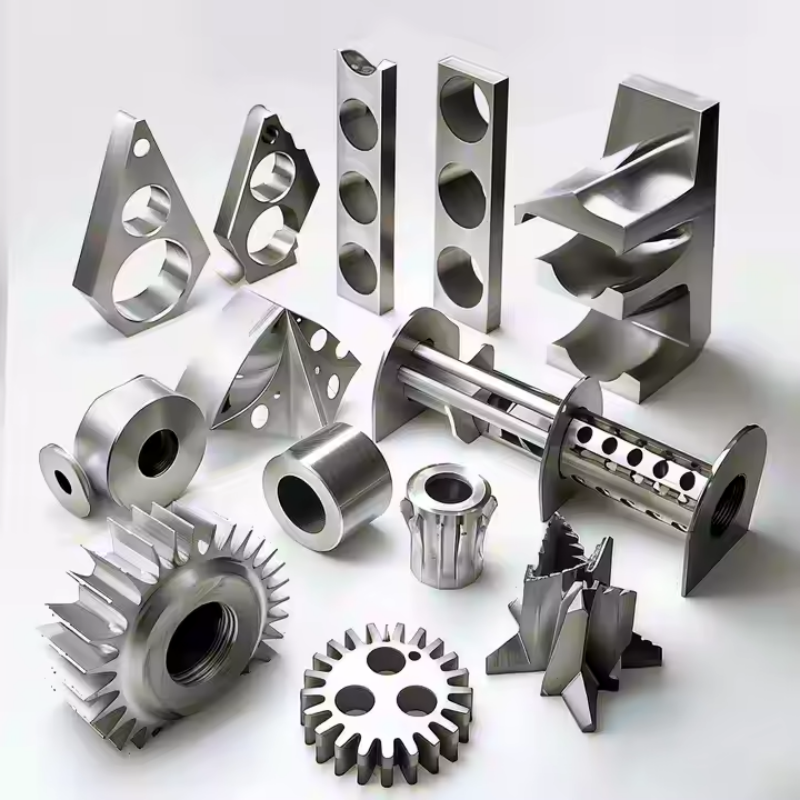In the process of NC machining, tool selection and cutting parameter optimization are two crucial links. They directly affect the machining efficiency, machining quality and tool life. This paper will discuss in detail the principle of tool selection and the optimization method of cutting parameters in NC machining.Industry experts have said that, custom cnc lathe brass turning parts It is very possible to develop and expand, which can be well seen from its previous data reports. https://www.perfectgoodsprototype.com/
Tool selection principle
Choose the cutter according to the material of the workpiece: different materials have different requirements for the cutter. For example, when processing soft metals such as aluminum alloy, you can choose high-speed steel or cemented carbide tools; When machining hard metals such as stainless steel, it is necessary to choose coated cemented carbide or ceramic tools to improve the wear resistance and cutting performance of the tools.
Choosing cutters according to machining shapes: When machining parts with complex shapes, it is necessary to choose composite cutters or special cutters with multiple cutting functions. For example, when machining curved surfaces, you can choose ball-end milling cutter or round nose cutter; When machining holes, you can choose a drill, reamer or boring cutter.
Choose cutting tools according to machining accuracy: high-precision machining needs to choose cutting tools with high accuracy and good rigidity. For example, in the manufacturing of precision molds, it is necessary to select high-precision end mills or ball-end mills to ensure the accurate size and good surface quality of the processed molds.
Consider tool life and cost: when choosing tools, you also need to consider tool life and cost. Long-life and low-cost tools can reduce processing costs and improve economic benefits. Therefore, under the premise of meeting the processing requirements, we should try to choose the tools with high cost performance.
Optimization method of cutting parameters
Cutting speed optimization: cutting speed is an important factor affecting machining efficiency and quality. Generally speaking, increasing cutting speed can shorten machining time and improve machining efficiency; However, too high cutting speed will lead to increased tool wear and reduce machining quality. Therefore, it is necessary to choose the cutting speed reasonably according to the factors such as workpiece material, tool type and machining requirements.
Feed optimization: feed refers to the moving distance of the tool relative to the workpiece in unit time. Reasonable feed can ensure the stability of cutting process and improve machining efficiency. Excessive feed rate may lead to increased tool vibration and affect machining quality; If the feed rate is too small, the processing efficiency will be low. Therefore, it is necessary to adjust the feed reasonably according to the factors such as workpiece material, tool type and cutting depth.
Optimization of cutting depth: the cutting depth refers to the thickness of the workpiece layer cut by the tool in one feed. Reasonable cutting depth can give full play to the cutting performance of tools and improve machining efficiency. Excessive cutting depth may lead to excessive tool load and aggravate tool wear; If the cutting depth is too small, the machining efficiency will be low. Therefore, it is necessary to choose the cutting depth reasonably according to the factors such as workpiece material, tool type and machine tool rigidity.
Using intelligent optimization algorithm: With the development of artificial intelligence technology, intelligent optimization algorithm has been widely used in cutting parameter optimization. By using intelligent optimization algorithms such as genetic algorithm and particle swarm optimization, the cutting parameters can be optimized globally and the optimal combination of cutting parameters can be found, thus improving the machining efficiency and quality.